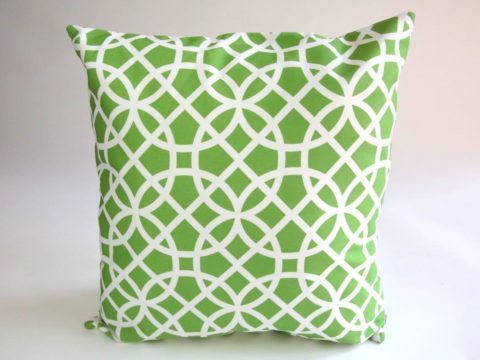Mary I: In Fact and Fiction
A Reading List
Portrayals of Mary I have been almost overwhelmingly negative, beginning with John Knox and his First Blast of the Trumpet against the Monstrous Regiment of Women and John Foxe’s Book of Acts and Monuments. More nuanced portraits appeared in the later nineteenth and early twentieth centuries.
Mary In Fact
We are aware of five major modern biographies of Mary:
Mary Tudor, by David Loades. David Loades is a widely respected historian with a distinguished academic pedigree who has written extensively about the Tudor period. His book on Mary, first published in the 1989, but updated in 2011, was the first modern biography of the Queen. Personally, I find Professor Loades has moved very little from the perception of Mary as an hysterical woman, totally dominated by her husband, whose failed reign was just a prologue to the glories of Elizabeth.
Mary Tudor: England’s First Queen, by Anna Whitelock. Dr Whitelock’s central thesis is that Mary’s reign, although short, demonstrated that a Queen-regnant could wield power in exactly the same fashion as a King. Mary did not necessarily always use that power wisely – the pressure put on the Council to agree to the war in France perhaps being an example – but in that she was no different from any other monarch. Mary made female power, if not welcome to her male contemporaries, at least respected and accepted.
The Myth of Bloody Mary: A biography of Queen Mary I of England, by Linda Porter. Dr Porter’s biography is a well-rounded and sympathetic portrayal of Mary, although it perhaps minimises Mary’s role in the religious persecution to a degree that is inconsistent with Porter’s overall analysis of Mary as a woman in control of events.
Mary I: England’s Catholic Queen, by John Edwards. This biography is from the highly-reputable, scholarly, Yale stable. Edwards makes extensive use of Spanish sources, providing a different and interesting angle to his work, which is detailed and engrossing.
Mary Tudor, by Judith M Richards. Published by Routledge, this too is a scholarly, rather than a popular biography, and introduces much of the new thinking on Mary’s Catholicism as closer to Evangelical and Counter-Reformation ideals, rather than traditional mediaeval piety.
Two volumes of essays looking either at aspects of her life or comparing her approach to specific issues with that of Elizabeth have recently been published. Fascinating though they are, it raises the question of why must Mary always be compared with Elizabeth? There are not many examples of historical accounts that compare other monarchs with his or her successor, even a sibling – how common are joint biographies of Richard I and King John; Edward IV and Richard III; Mary II and Anne; George IV and William IV?
Tudor Queenship: The Reigns of Mary and Elizabeth (Queenship and Power), ed Anna Whitelock & Alice Hunt. This is a fascinating series of essays by a wide range of experts looking at different aspects of the lives and reigns of the half-sisters, sometimes drawing immediate comparisons, but often illuminating previously unremarked elements of the life of one or other.
Mary Tudor: Old and New Perspectives, ed Susan Doran and Thomas. S. Freeman. This is another collection of informative essays, which contrasts accounts, both favourable and inimical, from the 16th to 20th centuries, and the new, more nuanced interpretations of the last twenty years.
In addition, there is the work of Professor Eamonn Duffy, whose Fires of Faith has done much to challenge received opinion on the religious persecutions of the reign, although critics sometimes find it too much of a whitewash and not much less biased than the Protestant polemics.
Mary also appears in group biographies. The analysis of her life and reign in the hugely influential Lives of the Queens of England by Agnes Strickland created a furore at the time, as it challenged perceptions of Mary as bloodthirsty and cruel
She-wolves: The Women who ruled England before Elizabeth by Dr Helen Castor develops the theme of how women in England who held power were constrained by perceptions of women’s right, and fitness, to rule. She shows how Mary dealt with the societal paradigm in which she lived – basically by acting like any male sovereign, whilst paying lip-service to ideals of wifely obedience and feminine weakness. Whilst many portrayals of Elizabeth’s success show her as learning from Mary’s mistakes, Dr Castor’s analysis suggests that Elizabeth learnt just as much from Mary’s strengths.
Mary In Fiction
Mary is almost always a bit-part player in historical fiction – usually portrayed as the dowdy older sister to Elizabeth, as in Margaret Irwin’s immensely influential trilogy Young Bess, The Captive Princess and Elizabeth and the Prince of Spain, or as a bitter, hysterical woman, brooding on her wrongs in Jean Plaidy’s various works.
In Hilary Mantel’s Wolf Hall and Bring up the Bodies, Mary is a minor character, for whom Cromwell seems to feel a rather superior sympathy.
In the 1970s, Hilda Lewis wrote a trilogy (I am Mary Tudor; Mary the Queen; Bloody Mary) about Mary which is, sadly, out of print. It is beautifully written and a broadly sympathetic portrait, although the last volume does focus very strongly on Mary as an hysterically jealous wife – I would guess it was modelled on H F M Prescott’s biography of 1941.
Suzannah Dunn’s The Queen’s Sorrow is a much more recent novel, and is a gripping, although rather disturbing read. (See Ms Dunn’s comments on The Queen's Sorrow here).
This article is part of a Profile on Mary I available in paperback and kindle format from Amazon.
Mary I
Family Tree










